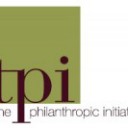It’s back. Suddenly I am seeing social capital everywhere and thinking a lot about how philanthropy can cultivate or kill it.
I first noticed it at Associated Grantmakers’ Annual Meeting a few weeks ago, where the featured speaker was Thomas Sander, Executive Director of the Saguaro Seminar at the John F Kennedy School of Government at Harvard University. This is an initiative created by Robert Putnam, of the famous book Bowling Alone, and since inception it’s been waving the flag on the importance of understanding, improving and measuring the creation of social capital.
Tom had all kinds of depressing data about the deterioration of our society’s bonding capital (connections with people who are similar) and bridging capital (connections to people who are dissimilar) and told a compelling narrative about their value in fostering trust, facilitating collaboration and improving individual and public wellbeing. Most disturbing was the emerging evidence of a growing ‘class gap’ in social connectedness among youth – ie poor youth are most isolated – and data showing that more diverse communities are characterized by declining civic engagement and trust. There were some glimmers of hope, such as increased political activity among youth, although I couldn’t help but think that politics seems to have become a platform that erodes, rather than builds, positive social connections.
How can philanthropy help? Pat Brandes of the Barr Foundation has clearly studied these concepts a lot and put them into practice with the eight-year-old Barr Fellows Network (the Stanford Social Innovation Review just did an excellent case study on it). This program provides executive directors of Boston non-profits with a three-month re-energizing sabbatical, executive coaching and a set of cohort activities abroad where leaders can learn from each other and build a peer network. One of the major lessons learned from the program: the bonding and bridging capital created through new relationships have become an important currency of social change in Boston’s historically ‘tribal’ community. Unexpected cooperative efforts have sprung up – eg the Boston Promise Initiative – and continue to ripple out. Other lessons learned from the program: you need lots of hours together to build deep ties; an intense, disruptive experience can deepen connections quickly through a shared sense of survival; and sometimes the best role for the foundation to play is to sit back and let it happen.
Once I started thinking about it, I realized that other foundation efforts to build social capital abound, even if they don’t call it as such. Beyond network building, there is the big field of community organizing in neighbourhoods (Harlem Children’s Zone), for specific issue areas (eg environmental justice or better schools) among specific populations (eg young activists), and efforts to build mutual support systems in such areas as financial stability (think micro-credit, or the Family Independence Initiative) or parenting (eg Parents Helping Parents). Some community foundations are specifically targeting social capital creation as a primary goal and sponsoring programs and contests, such as Winston Salem Foundation and their ECHO Council or the Community Foundation of Greater Des Moines and their Civility initiative. Cross-cultural exchange programs and community service programs create social capital. In ways big and small, intentionally or more often incidentally, foundations are often in the business of social capital.
Beware, however, of doing more harm than good. Bill Traynor, executive director of Lawrence Community Works, and a veteran community organizer, reminded the AGM audience that good intentions, poorly executed can also kill social capital. Bad meetings, public participation ‘karaoke’, investing in a neighborhood or organization and pulling out without warning, are just a few of the poisons to fostering bonds and trust.
So what’s philanthropy to do? Sander’s sobering data is not a surprise when you think about the increasing rates of disengaged youth and the political polarization of our society. Perhaps it’s time for our sector to be more intentional once again about building social capital. What could be a more important role for getting things done?
Ellen Remmer is managing partner of The Philanthropic Initiative
Further articles from Alliance magazine related to these topics:







Comments (0)